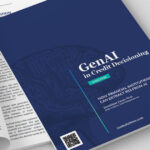According to data from the Consumer Financial Protection Bureau (CFPB), there are roughly 45 million people in the US who are eligible for credit products, but are not able to get them. Of this population, 26 million are credit invisible, meaning they have no credit history with one of the major credit reporting agencies. The other 19 million have insufficient data on file to generate a score through the majority of scoring models.[i]
The CFPB also reports:
“This problem disproportionately impacts consumers who are Black or Hispanic, and people who live in low-income neighborhoods. It also impacts some recent immigrants, young people just getting started, or people who are recently widowed or divorced who don’t have enough credit history on their own.”[ii]
These groups need the same products as credit consumers from across the spectrum of scores. How can financial institutions pull back the curtain, learn enough about individuals, and provide appropriate credit while managing their risk?
Alternative Data to the Rescue
Making a credit decision for a population that has no traditional credit file or insufficient history is no easy task. Without the historical context, creditors can risk delinquencies and defaults. How can FIs know whether to extend a credit offer to an individual they’ve never met before?
Creditors looking to serve those populations can benefit from real-time accessibility to supplemental information to develop credit score models for thin file consumers. Additionally, new and alternative data sources can help make credit available for the credit invisibles.
This alternative data can include information about a consumer’s mobile phone payment history and rent payments, utilities payment history, electronic transactions like deposits and withdrawals, and more. With instant access to this data, issuers can build decision logic that takes into account non-traditional factors, and provide credit to individuals who need it.
By factoring these new elements into the credit decision process, FIs can be on the leading edge of discovering and capturing new-to-credit consumers. Credit cards that can be used within a chain or a single store, or with low limits, are often one of the first credit products for younger people or those with thin credit history.
For those populations, having access to credit, even at a higher interest rate, may be appealing as a way to access the items they need while providing an opportunity to build their credit history.
Additional Insight into Underserved Markets
In addition to alternative data, FIs can use Artificial Intelligence (AI) to help customers who are underbanked/unbanked or have thin credit files. In cases where traditional bureau data is insufficient or not present for an FI to make a decision, AI-enabled business processes can help find the details an FI needs to effectively evaluate and engage with those customers.
Having access to alternative data can address one element of thin and no-file customers. Putting that information in context and making a profitable, risk-averse lending decision is where an AI application can benefit both the consumer and the FI.
AI presents a particular opportunity for FIs to reach more thin-file customers in the case of auto loans. Because approximately 73% of cars on the road today are financed, there is a significant opportunity for FIs to make offers that may be more favorable to the consumer than their current loans.[iii]
FIs could use AI to evaluate customers holding subprime or deep subprime auto loans for patterns that indicate lower likelihood of defaulting, such as rental payment history or check cashing. FIs could couple those insights with decision logic and attributes that represent the best alternative identifiers/attributes, and take advantage of the “significant opportunity to address unmet demand for lower-rate auto loans to these lower-risk consumers.”[iv]
Billions in Opportunity
For FIs, making headway into the credit invisible and thin file markets represents potentially billions of dollars in revenue. According to a report by the Center for Financial Services Innovation, “underserved consumers spent $140.7 billion on fees and interest” in 2015.[v]
Consumers spent those dollars on short and long term credit products, payment and deposit accounts, single payment credit products, and other products and services that banks and FI can easily provide to consumers. FIs willing to invest in alternative data could tap into a significant market, develop new customers and enhance the experiences for millions of underbanked Americans.
Ready to tap into a billion dollar market, develop new customers and provided needed products to an underserved market? Contact us today to learn more about incorporating alternative data into your credit decisioning logic.
[i] https://www.consumerfinance.gov/about-us/newsroom/cfpb-explores-impact-alternative-data-credit-access-consumers-who-are-credit-invisible/
[ii] Ibid
[iii] Schmall, T. (January 12, 2017). Driving for Broke: The Underserved Insurance and Auto Loan Opportunity. CFSI. Retrieved June 19, 2017, from https://s3.amazonaws.com/cfsi-innovation-files/wp-content/uploads/2017/01/28034250/2016-CFSI-Driving-For-Broke-FINAL.pdf
[iv] CFSI. (November 17, 2016). America’s Financially Underserved Marketplace: A $141 Billion Opportunity Hiding in Plain Sight. Retrieved May 19, 2017, from https://medium.com/@CFSInnovation/americas-financially-underserved-marketplace-a-141-billion-opportunity-hiding-in-plain-sight-b37a48582fda
[v] http://cfsinnovation.org/wp-content/uploads/2016/11/2016-Financially-Underserved-Market-Size-Study_Center-for-Financial-Services-Innovation.pdf[/vc_column_text][/vc_column][/vc_row]





